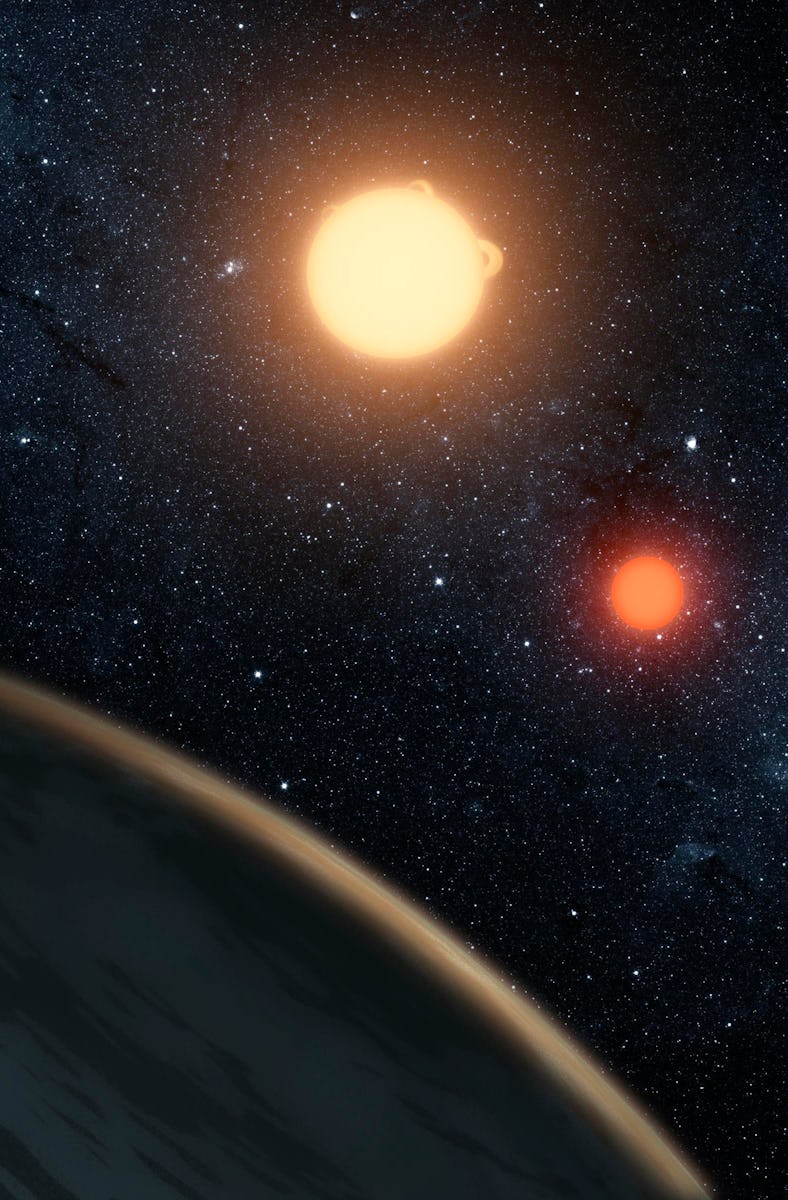Astronomers Discover an Exciting, Rare Planet Straight Out of Star Wars
Many Milky Way stars come in pairs. But finding exoplanets around them, especially more than one, is rare.

Scientists have just announced the discovery of a planet that resembles Tatooine, Luke Skywalker’s home in Star Wars where the sky is adorned by two stars.
The finding was hiding in plain sight, lurking near an already-known distant world. Plus, this new revelation is extra special: it is only the second-known case where more than one exoplanet circles a stellar pair.
Many stars in the Milky Way come in pairs. It’s a common outcome for the disks of dust and gas that precede stars and planets. The new finding, published in a paper on Monday in the journal Nature Astronomy, might fill in some gaps that evade astronomers, and help enrich what’s known about how planets form throughout the galaxy.
Thousands of exoplanets, or worlds around other stars, have appeared to scientific instruments over the last several decades.
But it’s uncommon to spot a circumbinary system, where an exoplanet orbits two stars. And seeing two stars with more than one exoplanet in their vicinity is exceedingly rare.
“Only 12 circumbinary systems are known so far, and this is only the second that hosts more than one planet,” David Martin, an astronomer and Sagan Fellow at the Ohio State University, says in a University of Birmingham announcement about the paper.
“As both stars orbit one another, they act like a giant paddle that disturbs the disc close to them,” study author and astrophysicist Lalitha Sairam says in the announcement. It may be trickier for planets to form around binary systems, but the exception proves the rule.
“It is easier to pinpoint the location and conditions of planet formation in circumbinary systems compared to single stars like the Sun,” Sairam adds.
The new world is called BEBOP-1c. It gets its name from the project that collected the data of its discovery, the Binaries Escorted By Orbiting Planets (BEBOP). It appeared as a result of another information quest: astronomers knew that its companion, exoplanet TOI-1338b, existed. But they wanted to know its mass.
According to the announcement, the team spent years trying to attain the mass. They peered into this binary system using several methods, like the transit method (where an exoplanet blocks the light of its star and reveals itself to telescopes) and the wobble method (which measures the velocity of stars.)
But they discovered a new world in the process, and found themselves a cosmic four-leaf clover.